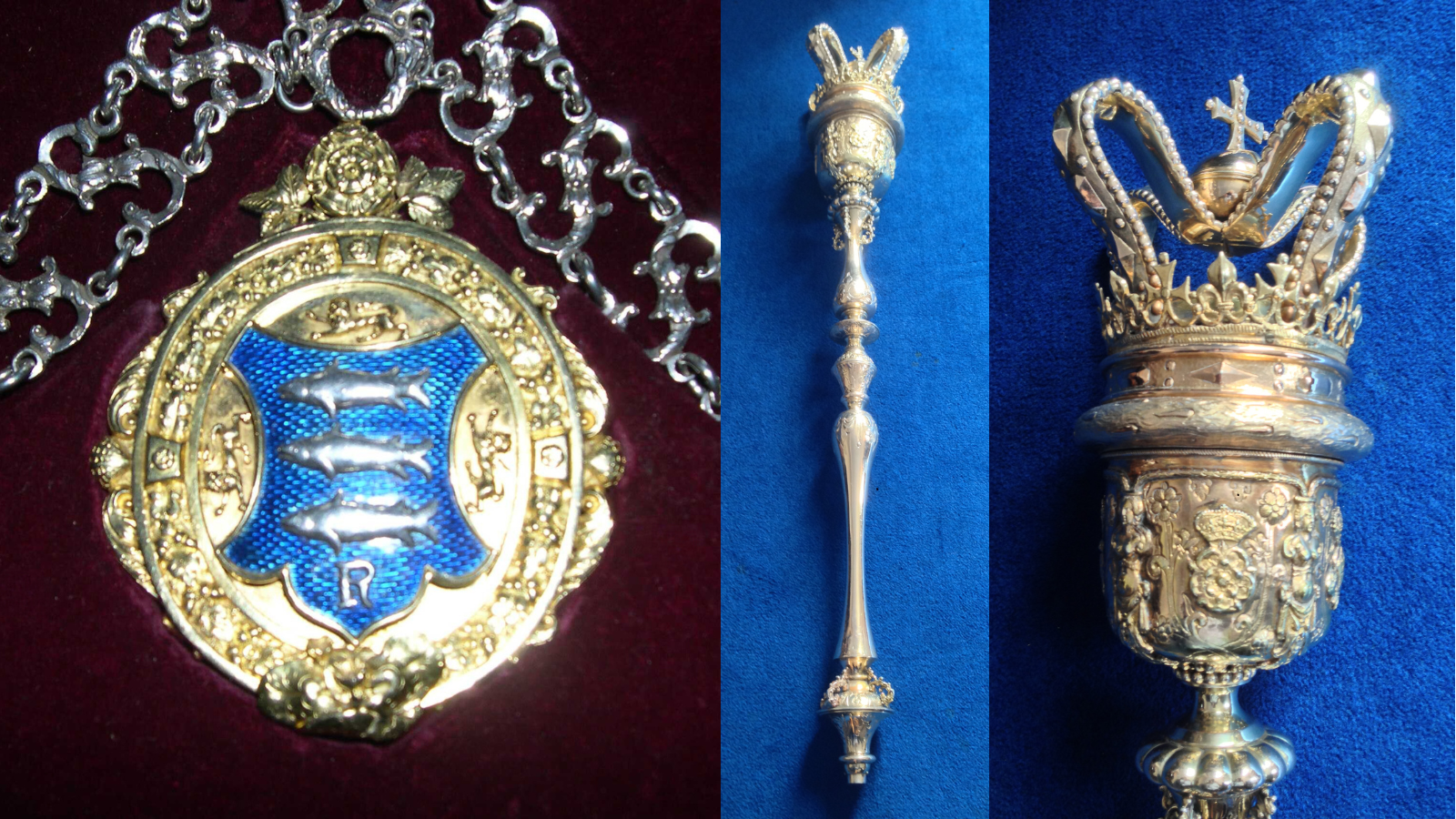Our Mayoral history and key facts

The Mayor
-
The position of the Mayor in Kingston is a relatively recent appointment, with the first only appearing in 1835
-
The word ‘Mayor’ derives from the Latin word ‘Magnus’, meaning great
-
The office of Mayor together with the Domesday Book and the feudal system were brought to this country by the Normans as such an office has existed on the continent since at least the fifth century
-
The power of the Mayor has reduced through the centuries. However it continues to have a central part to play in modern Councils and modern society with its rich history and tradition.
Civic Insignia
-
On appropriate civic or ceremonial occasions, the Mayor wears a robe and a black cocked or (in the case of a female Mayor) tricorn hat. A lace stock or jabot is worn at the neck; similar robes are worn by the Deputy Mayor.
-
Both the Mayor and Deputy Mayor wear chains and badges of office. These are worn on the Royal Borough collarette ribbon (blue and silver) when required.
-
In addition to the hat, chains, and badges, on appropriate occasions the Mayor wears a scarlet robe made of superfine scarlet wool with fake fur trim. The robes are worn with a lace jabot (similar to a cravat) at the neck, with lace cuffs worn on black sleeves and white cotton gloves; these robes are worn regardless of gender.
The Chain
-
The Mayor’s chain is made of sterling silver of 92.5% purity.
-
A Herald’s silver collar follows the Lancastrian pattern with gilt shoulder pieces; these are composed of the crown, shamrock, and thistle, all crowned with the motto ‘Dieu et mon Droit’ (meaning ‘God and my Right’ in French).
-
On the reverse of each link and on the shoulder pieces are engraved the names of all the Mayors from 1835 to 1965.
-
The seventh link from the left on the lower chain (worn across the Mayor’s back) has been enamelled as a sign of respect for several Mayors who have died whilst in office.
The Mace
-
Originally maces were large sticks with a heavy round ball at the end used in battle. The standard mace, however, was adopted as a symbol of authority and those used by Councils have the stamp of the Royal Arms on the bottom; it is a symbol of the Monarch’s authority, vested in the Mayor. It is placed in front of the Mayor at all meetings of the Council and is carried in front of the Mayor on all appropriate ceremonial occasions.
-
Before there was a Mayor of Kingston, there were two Bailiffs. The senior Bailiff (who would now be the Mayor) carried the Great Mace; made of silver gilt, the head comprises Royal badges between sprigs or roses and fleur-de-lys in panels divided by caryatids, with a band representing fur and a Royal crown. The junior Bailiff (who would now be the Deputy Mayor) carried the ‘small mace’; also made of silver gilt, the small mace consisted of a plain band with dividing bands, and imagery of roses and fleur-de-lys, as well as a shield with the three salmon of Kingston and caryatids. The small mace also features Royal badges and a Royal crown.
-
The Kingston maces are rare as during the Civil War, most of this regalia was destroyed by Oliver Cromwell and his forces - Kingston avoided this by removing the Royal Arms and replacing them with Commonwealth Arms, which were then replaced with the original during the Restoration.
Coat of Arms
-
The right to utilise a coat of arms was first given to the Royal Borough of Kingston upon Thames in 1572.
-
The current coat of arms was granted by letters patent (published written order issued by a monarch) in 1966, following the amalgamation of the boroughs of Kingston, Surbiton and Malden, and Coombe in 1965. The present coat of arms combines elements of the former three boroughs.
-
The shield is the ancient coat of arms of the former Royal Borough of Kingston upon Thames; it bears three salmon fish, coloured blue, to reference the three fisheries mentioned in the Domesday Book.
-
The crest consists of that of the former Borough of Malden and Coombe; the borough’s shield hangs from the stag’s neck, in reference to Malden and Coombe’s connections with the Crown and Merton College (Oxford), with the stag being a reminder of the part of Richmond Park in the area.
-
The supporters are those of the former Borough of Surbiton, with its shield hanging from their necks; the elm in the shield recalls the ancient Hundred of Elmbridge.
-
The badge displays the Kingston salmon, surrounded by leaves of the Surbiton elm and the Malden and Coombe bay, surmounted by a Saxon crown in reference to the Royal Borough’s title.
-
The whole coat of arms rests on a grassy base edged with waves, symbolising the Royal Borough’s situation on the Thames, and preserves the heraldry of all the constituent boroughs.
-
